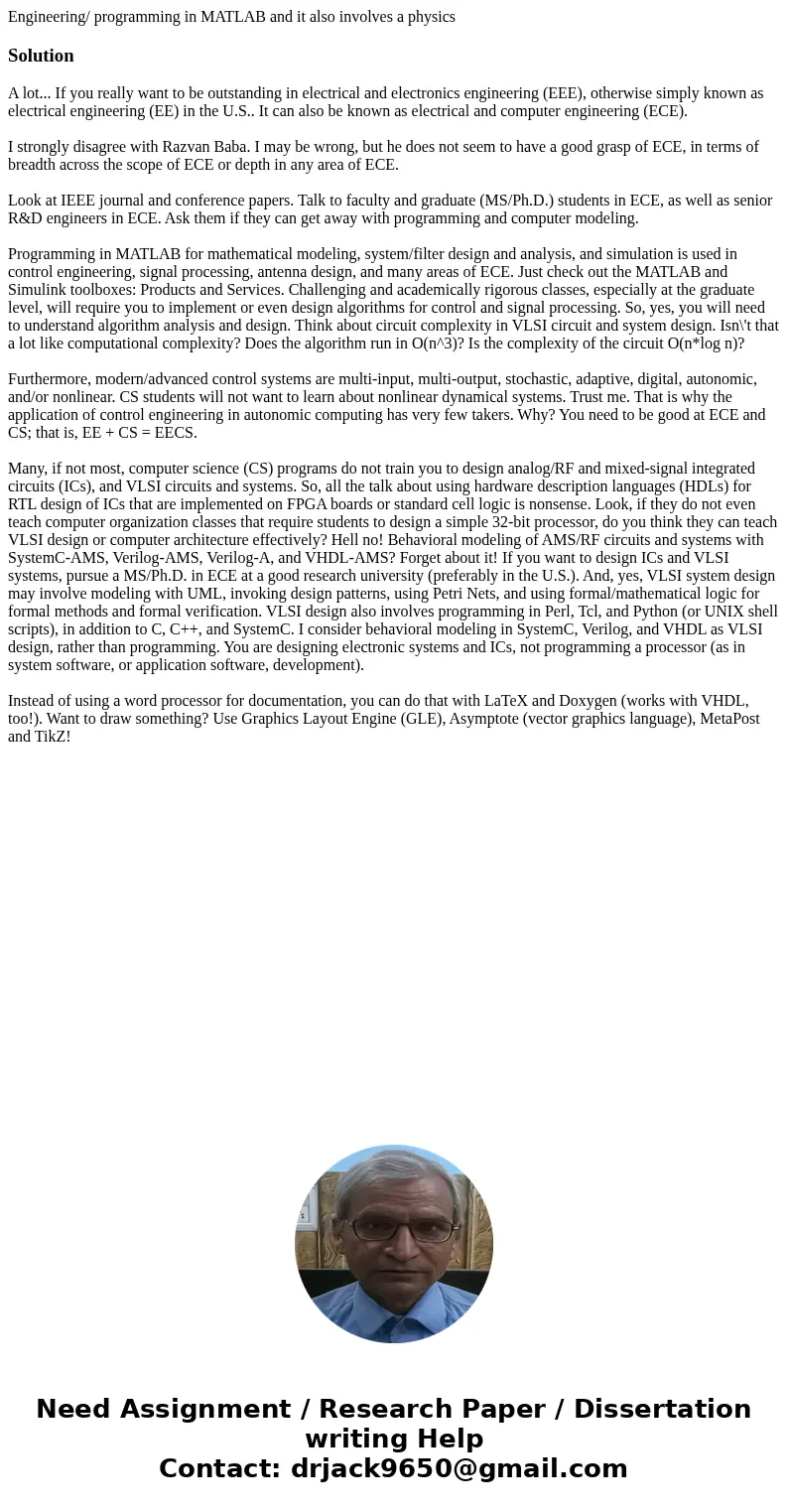Engineering programming in MATLAB and it also involves a phy
Engineering/ programming in MATLAB and it also involves a physics
Solution
A lot... If you really want to be outstanding in electrical and electronics engineering (EEE), otherwise simply known as electrical engineering (EE) in the U.S.. It can also be known as electrical and computer engineering (ECE).
I strongly disagree with Razvan Baba. I may be wrong, but he does not seem to have a good grasp of ECE, in terms of breadth across the scope of ECE or depth in any area of ECE.
Look at IEEE journal and conference papers. Talk to faculty and graduate (MS/Ph.D.) students in ECE, as well as senior R&D engineers in ECE. Ask them if they can get away with programming and computer modeling.
Programming in MATLAB for mathematical modeling, system/filter design and analysis, and simulation is used in control engineering, signal processing, antenna design, and many areas of ECE. Just check out the MATLAB and Simulink toolboxes: Products and Services. Challenging and academically rigorous classes, especially at the graduate level, will require you to implement or even design algorithms for control and signal processing. So, yes, you will need to understand algorithm analysis and design. Think about circuit complexity in VLSI circuit and system design. Isn\'t that a lot like computational complexity? Does the algorithm run in O(n^3)? Is the complexity of the circuit O(n*log n)?
Furthermore, modern/advanced control systems are multi-input, multi-output, stochastic, adaptive, digital, autonomic, and/or nonlinear. CS students will not want to learn about nonlinear dynamical systems. Trust me. That is why the application of control engineering in autonomic computing has very few takers. Why? You need to be good at ECE and CS; that is, EE + CS = EECS.
Many, if not most, computer science (CS) programs do not train you to design analog/RF and mixed-signal integrated circuits (ICs), and VLSI circuits and systems. So, all the talk about using hardware description languages (HDLs) for RTL design of ICs that are implemented on FPGA boards or standard cell logic is nonsense. Look, if they do not even teach computer organization classes that require students to design a simple 32-bit processor, do you think they can teach VLSI design or computer architecture effectively? Hell no! Behavioral modeling of AMS/RF circuits and systems with SystemC-AMS, Verilog-AMS, Verilog-A, and VHDL-AMS? Forget about it! If you want to design ICs and VLSI systems, pursue a MS/Ph.D. in ECE at a good research university (preferably in the U.S.). And, yes, VLSI system design may involve modeling with UML, invoking design patterns, using Petri Nets, and using formal/mathematical logic for formal methods and formal verification. VLSI design also involves programming in Perl, Tcl, and Python (or UNIX shell scripts), in addition to C, C++, and SystemC. I consider behavioral modeling in SystemC, Verilog, and VHDL as VLSI design, rather than programming. You are designing electronic systems and ICs, not programming a processor (as in system software, or application software, development).
Instead of using a word processor for documentation, you can do that with LaTeX and Doxygen (works with VHDL, too!). Want to draw something? Use Graphics Layout Engine (GLE), Asymptote (vector graphics language), MetaPost and TikZ!

 Homework Sourse
Homework Sourse